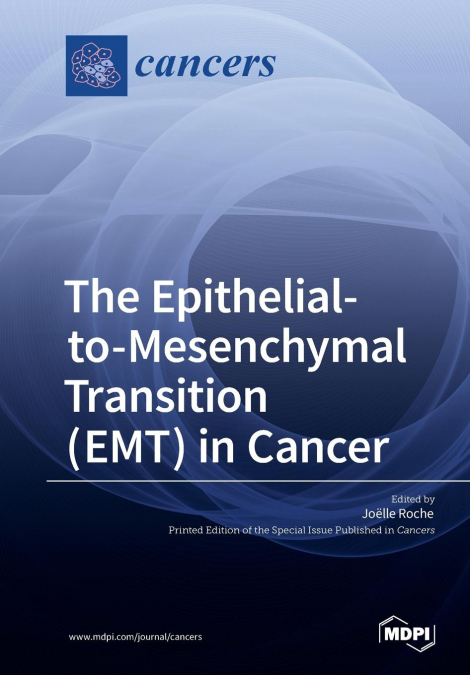
 Librería Perelló (Valencia)
Librería Perelló (Valencia)
 Librería Aciertas (Toledo)
Librería Aciertas (Toledo)
 Librería Elías (Asturias)
Librería Elías (Asturias)
 Donde los libros
Donde los libros
 El AlmaZen del Alquimista (Sevilla)
El AlmaZen del Alquimista (Sevilla)
 Librería Kolima (Madrid)
Librería Kolima (Madrid)
 Librería Proteo (Málaga)
Librería Proteo (Málaga)
The epithelial-to-mesenchymal transition (EMT) is a highly dynamic process with multiple transitional states, by which epithelial cells can convert into a mesenchymal phenotype. This process involves loss of cellular adhesion and cellular polarity, and an improvement in migratory and invasive properties. It occurs during normal embryonic development, tissue regeneration, organ fibrosis, and wound healing. It is also involved in tumor progression with metastatic expansion, and plays a major role in resistance to cancer treatment. In cancers, EMT inducers are hypoxia, cytokines and growth factors secreted by the tumor microenvironment, stroma crosstalk, metabolic changes, innate and adaptive immune responses, and treatment with antitumor drugs. Switch in gene expression from epithelial to mesenchymal phenotype is triggered by complex regulatory networks involving transcriptional control, non-coding RNAs, chromatin remodeling and epigenetic modifications, alternative splicing, post-translational regulation, protein stability and subcellular localization. Reversion of EMT, the mesenchymal-to-epithelial transition (MET), affects circulating cancer cells when they reach a desirable metastatic niche to develop secondary tumors. More knowledge and control of EMT to MET is necessary and will be beneficial for patients for cancer treatment. This current Special Issue entitled “Epithelial to Mesenchymal Transition in Cancer” will address these questions.